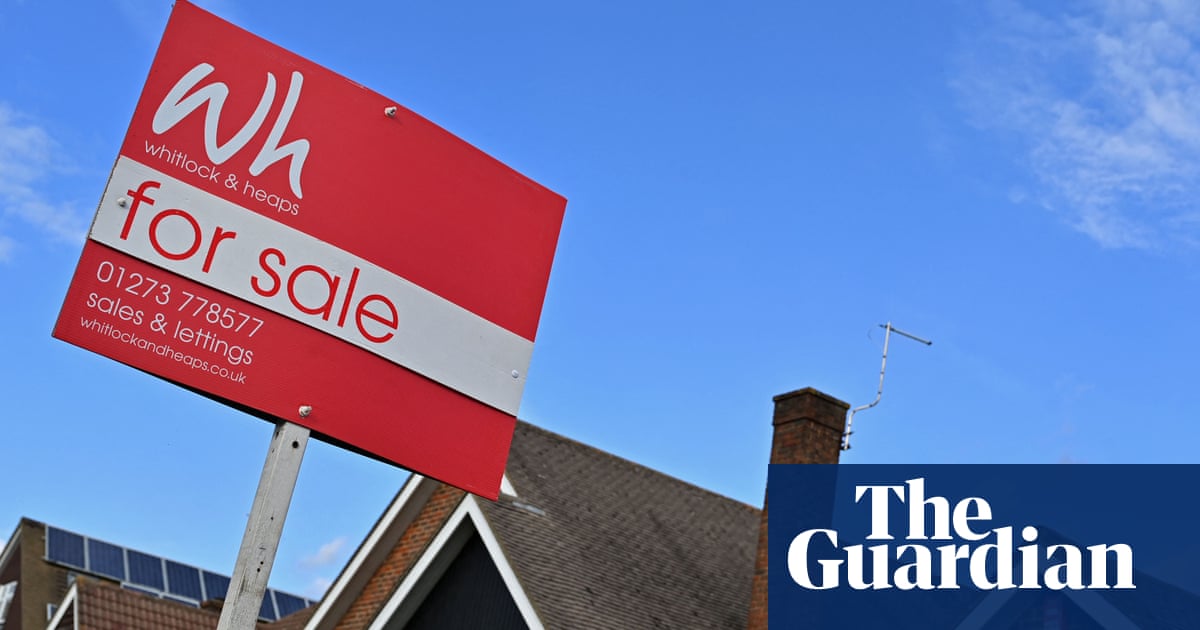
Britain’s housing market is “past peak pain”, the upmarket estate agent Savills has said. The big mortgage lenders Halifax and Nationwide building society have recorded monthly house price gains in recent months, which have taken some by surprise. But that does not mean the annual declines in property prices are over.
Just over 60% of households (about 16 million) own their homes in England and Wales, but property has been an engine of economic growth since the financial crisis ushered in an era of low interest rates, with the wealth it creates fuelling spending on goods and services. When house prices rise – or fall – there is an economic ripple effect. So what will 2024 bring for the all-important housing market, and which geographic areas are likely to attract the most interest from buyers?
The forecast from lenders and estate agents is mixed: 2024 is set to be a second year of falling house prices in the UK, with values expected to drop by up to 4% year on year, despite a likely recovery in the second half underpinned by lower borrowing costs as the Bank of England begins to reverse its long cycle of rate increases.
Robert Gardner, chief economist at Nationwide, says: “People are becoming a little bit more optimistic. It’s still going to be difficult for households but hopefully the squeeze on incomes will continue to lessen because growth is outpacing inflation.”
Coupled with lower mortgage rates, affordability should improve, although this would take time, he adds. “Affordability is still stretched.”
A few days into the new year, HSBC has become the latest high street lender to lower its mortgage deals, and brokers predict the price war among lenders will continue. At the same time, with the economy on the brink of recession and with the ongoing cost of living pressures, and sharply higher interest rates than in recent years, many people, particularly first-time buyers, will still struggle to buy a home in the coming months.
In 2023, UK house prices fell by 1.8%, according to Nationwide; the drop was much smaller drop than expected at the start of last year, when experts forecast declines of between 5% and 12%. Mortgage approvals fell by a quarter last year and housing transactions fell by nearly a fifth; both figures are the lowest in at least a decade. Most regions of the UK posted falls apart from Northern Ireland, where prices rose by 4.5%, and Scotland, up by 0.5%.
Most property companies are predicting further small declines in 2024, ranging from a flat outcome to a 4% drop, followed by a return to growth in 2025.
Knight Frank expects prices to fall by 4% in 2024, less than the 5% it forecast earlier, as the economy stabilises and attention turns to when the first interest rate cut will come.
Lower-than-expected inflation has fuelled expectations of a series of rate cuts next year. The City is expecting as many as six quarter-point cuts, taking the Bank of England’s base rate from 5.25% to about 3.75% by the end of 2024. Financial markets are betting that the first reduction will come by May.
Many lenders have already started trimming their mortgage rates, to an average of 5.92% for a two-year fix and 5.53% for a five-year fix, according to Moneyfacts. Intensifying competition meant many would-be buyers could get much better deals than those headline rates.
The mortgage lender John Charcol says: “Lenders will be looking to capitalise on the pent-up purchase demand and those coming to the end of their fixed rate in the first half of 2024, so we should expect to see continuous battle amongst lenders.”
Halifax is expecting house prices to fall between 2% and 4% in 2024, and Nationwide says they could be flat or fall by a small single-digit figure. Savills and Jones Lang LaSalle (JLL) are predicting a drop of 3%, while the property websites Zoopla and Rightmove have predicted drops of 2% and 1%.
JLL explains that price falls earlier in the year would outweigh any increases in the second half, meaning single-digit annual falls by the end of 2024.
Frances McDonald, a director in Savills’ residential research team, says: “We’re expecting the housing market to bottom out in the first half of 2024, because that’s when you begin to see more meaningful cuts to lending costs on the back of Bank base rate cuts.”
About 1.5 million homeowners will come to the end of their fixed-rate mortgage deals this year, and many will have to refinance at much higher rates than they have been used to in recent years. Last year, 1.6m fixed-rate deals expired, according to the Financial Conduct Authority. So far, the market downturn has not been as severe as expected.
Tom Bill, the head of UK residential research at Knight Frank, says: “Price declines have not been as steep as forecast in most residential markets. Low transaction volumes may skew the numbers but there are other factors supporting prices.
“A strong jobs market, the availability of longer mortgages, the fact more homes are owned outright than with a mortgage (35% versus 29% according to the latest English Housing Survey) and the absence of forced selling due to tighter mortgage stress-testing rules since the global financial crisis have all helped avoid steeper declines.”
This year, forecast price falls will be steepest in London, the south-east and east, down between 3.5% and 4%, while the north-east, Scotland, Wales and West Midlands are set to post the smallest declines: between 1.5% and 2%, according to Savills’ projections.
Among the towns and cities that have done well is Huddersfield, where house prices rose 8.7% last year, adding £22,137 to the average price of a home, according to Halifax. Bradford came second with 8.5% growth, followed by Falkirk in Scotland with 6% growth, and Hillingdon in London, where property values rose 4.5%.












